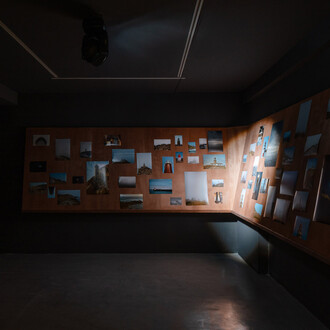When the Museo del Prado opened in 1819, the only paintings on display were works by Spanish artists, as from the outset there was a clear intent on the part of the Museum to raise the profile of Spanish painting and champion its values. This aim has been maintained over time, and as a result the “Department of Spanish Painting (up to 1700)” includes just over 2,000 Spanish paintings dating from the 12th to the late 17th centuries. These works offer a relatively detailed survey of the principle chapters in the history of Spanish painting, particularly with regard to artists and schools from the Renaissance onwards. Within this collection there are a number of notably important and extensive groups of works by many of the principal painters active in Spain, including Juan de Flandes, Pedro Berruguete, Luis de Morales, Zurbarán, Correa del Vivar, Juan de Juanes, El Greco, Maíno, Ribera, Velázquez, Zurbarán, Alonso Cano, Pereda and Murillo. In almost every case, the Prado’s collection constitutes the largest holding of each artist’s work in any museum. Particularly significant is the representation of Velázquez, of whom the Museum possesses 48 works, representing almost 40% of his known output and furthermore including most of his masterpieces.
In addition to these groups associated with a single artist, the Museum also offers a particularly complete vision of the evolution of the principal pictorial genres in Spain. This is naturally the case with religious painting, but also with the still life and the court portrait. Some of these works are by a single artist, such as the paintings for the altarpiece in the Colegio de Doña María de Aragón by El Greco or the group painted by Vicente Carducho for the Charterhouse of El Paular. In other cases they are series by various different painters, such as the one executed to decorate the Hall of Realms in the Buen Retiro Palace in Madrid, which involved the participation through competition of the leading artists working at court at that date, among them Velázquez, Maíno, Carducho, Pereda and Zurbarán.
The collection of Spanish painting from prior to 1700 is shown in seven galleries on the Museum’s ground floor and in twenty-two on the main, first floor. The works are presented in a chronological ordering but one that also highlights connections with other national schools and traditions. Thus, works by Pedro Berruguete are hung close to those of the Early Netherlandish painters, El Greco is near the Venetians, Ribera shares a gallery with the French Caravaggisti and Velázquez’s The Spinners is hung next to Rubens’s The Abduction of Europa. Alongside galleries or series of galleries devoted to the work of a single artist are others that display works by painters working at the same period, two galleries focusing on the still life, one on the 17th-century court portrait and a room devoted to the above-mentioned Hall of Realms.
















